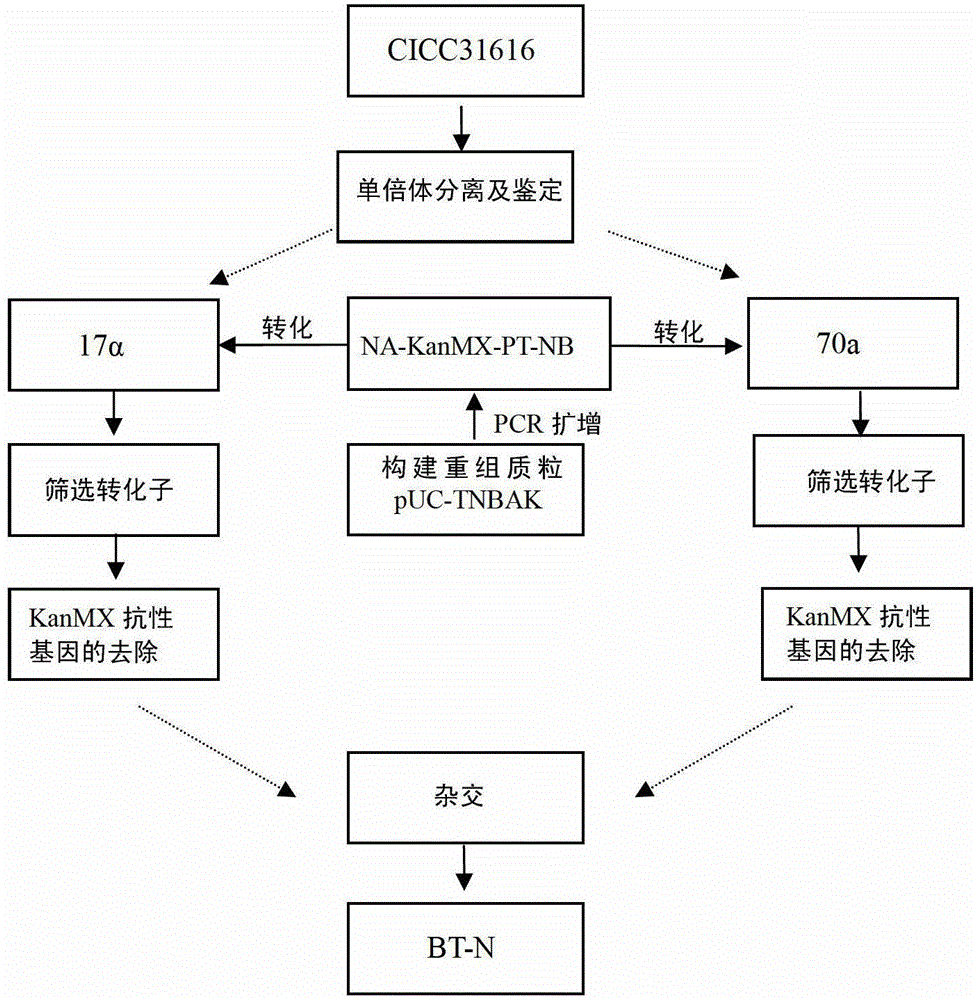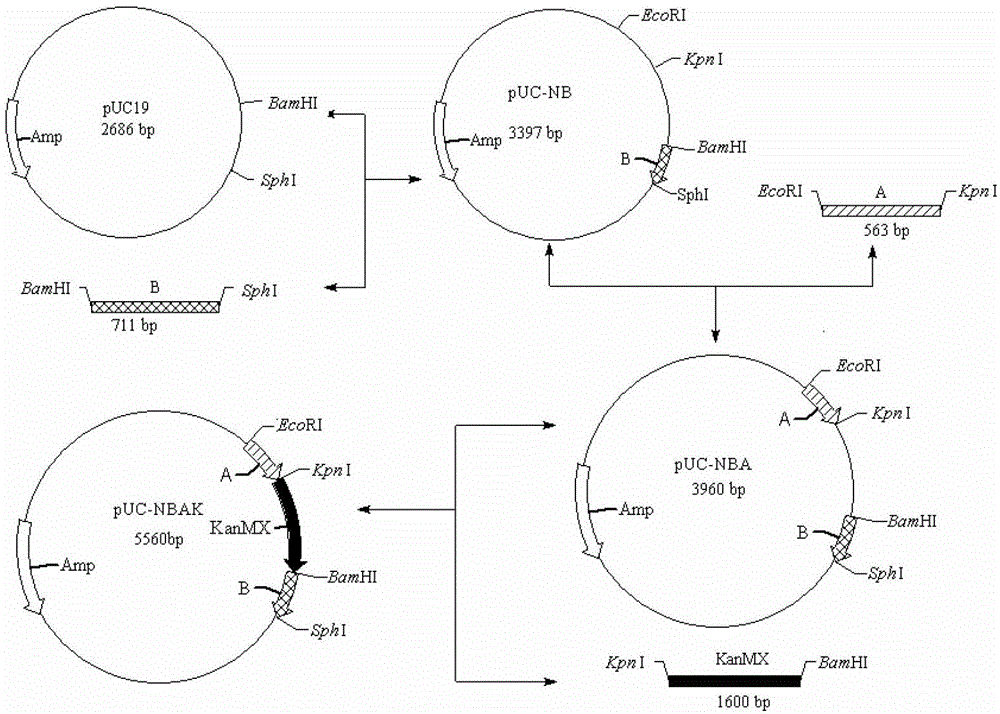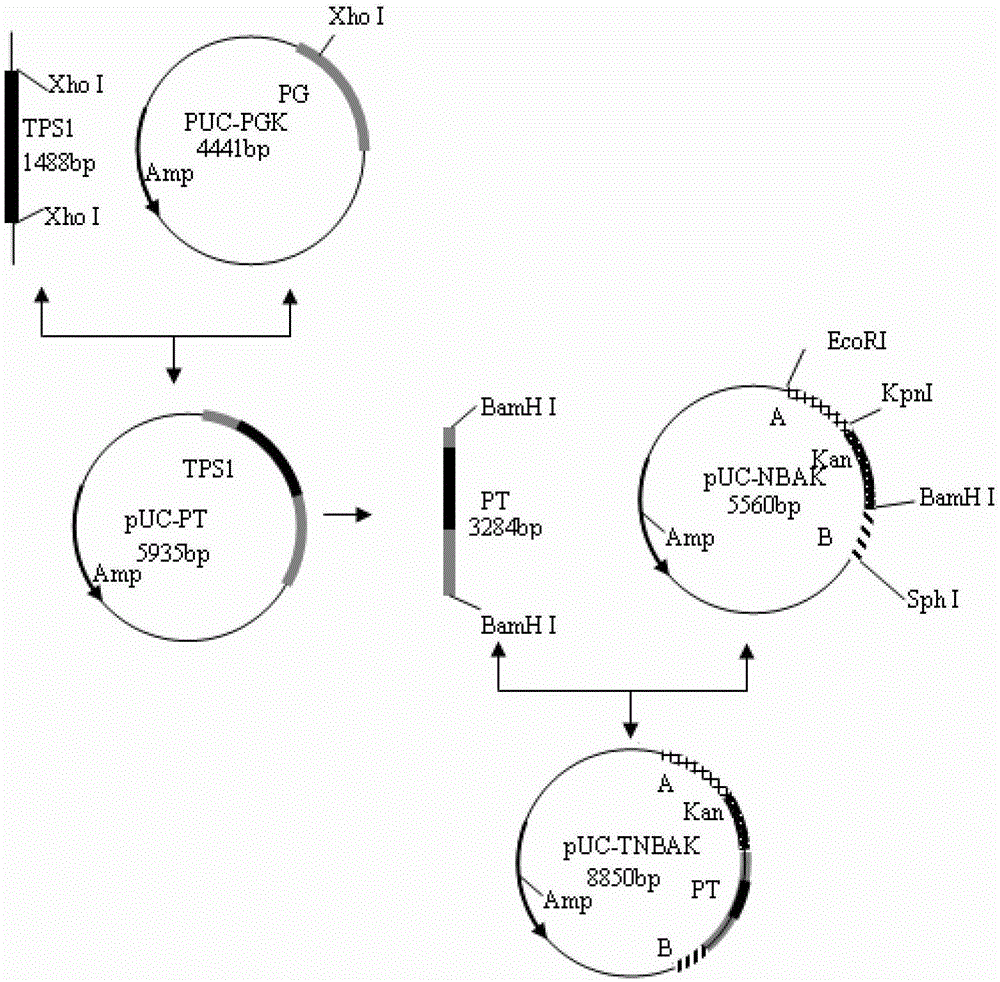A freeze-resistant yeast strain for bread fermentation and its breeding method
A yeast strain, freeze-resistant technology, applied in the field of bioengineering, can solve the problems of restricting the development of frozen dough technology, rough structure, insufficient dough expansion, etc., and achieve the effect of improving the synthesis ability of trehalose, wide application prospects, and not easy to recover mutations
- Summary
- Abstract
- Description
- Claims
- Application Information
AI Technical Summary
Problems solved by technology
Method used
Image
Examples
Embodiment 1
[0022] Embodiment 1: Breeding of freeze-resistant yeast strain
[0023] (1) Construction of recombinant strains
[0024] The construction process of recombinant strains is as follows: figure 1 shown. The diploid starting strain CICC31616 was haploidized to generate a-type and α-type haploid strains 70a and 17α, and the recombinant haploid strains were constructed by two homologous recombination methods, and the KanMX resistance gene was removed and the haploid strains were hybridized Somatic strains to generate diploid recombinant strain BT-N.
[0025] The construction process of the recombinant plasmid pUC-TNBAK is as follows: figure 2 with image 3 shown. By PCR amplification technology, the sequence NA and NB fragments on both sides of the NTH1 gene for homologous recombination to knock out the gene and the KanMX resistance gene from the pUG6 plasmid were amplified, and the three fragments were amplified according to the pUC19 plasmid as the vector The sequence ligat...
Embodiment 2
[0037] Embodiment 2: Fermentation experiment of freezing-resistant yeast strain
[0038] (1) Freezing tolerance experiments of transformants and haploid parents
[0039]The haploid parents 70a and 17α and their corresponding recombinant haploids were simultaneously subjected to liquid simulated dough medium freezing experiments. After freezing at -20°C for 21 days, the cell survival rate and relative fermentation ability were measured. The results are shown in Table 1. The results showed that the intracellular trehalose content of the parent 70a was 95mg / g, the freezing survival rate was 25%, and the relative fermentability was 23.22%. The intracellular trehalose content of the recombinant haploid was 118mg / g, and the freezing survival rate was 83.78%, the relative fermentability is 47.06%, that is, the intracellular trehalose content of the recombinant haploid ΔN+TPS1a increased by 23mg / g compared with the parent 70a, the cell freezing survival rate increased by 58.78%, and t...
PUM
 Login to View More
Login to View More Abstract
Description
Claims
Application Information
 Login to View More
Login to View More - R&D
- Intellectual Property
- Life Sciences
- Materials
- Tech Scout
- Unparalleled Data Quality
- Higher Quality Content
- 60% Fewer Hallucinations
Browse by: Latest US Patents, China's latest patents, Technical Efficacy Thesaurus, Application Domain, Technology Topic, Popular Technical Reports.
© 2025 PatSnap. All rights reserved.Legal|Privacy policy|Modern Slavery Act Transparency Statement|Sitemap|About US| Contact US: help@patsnap.com



